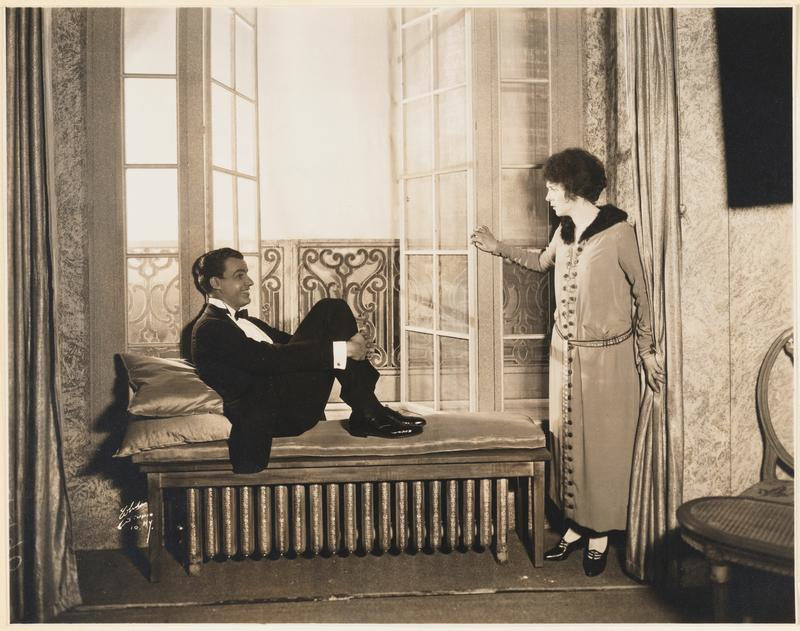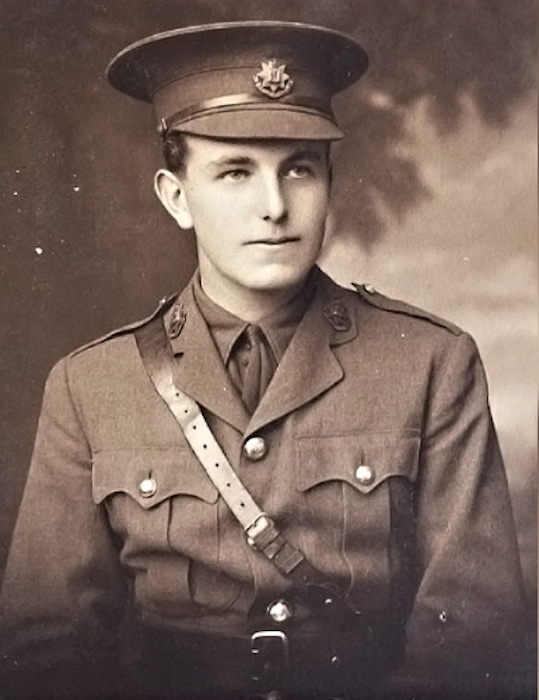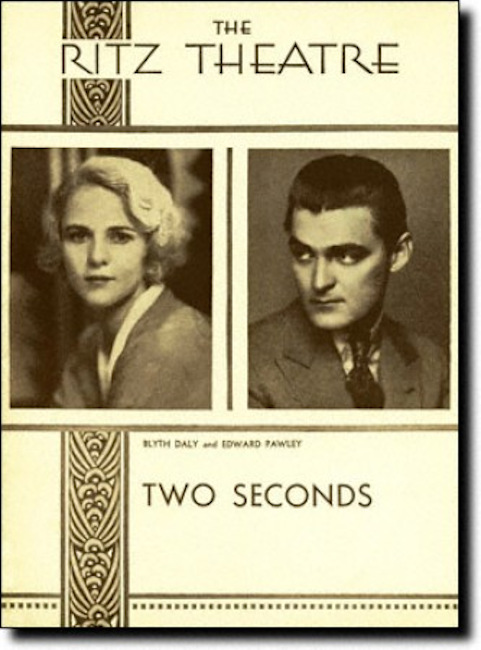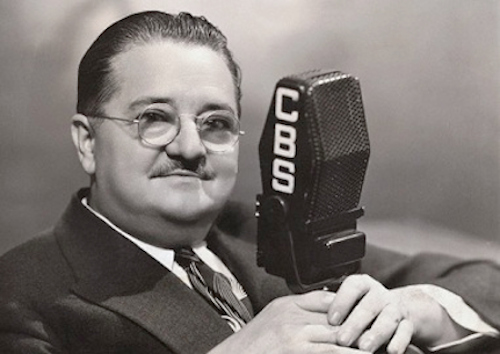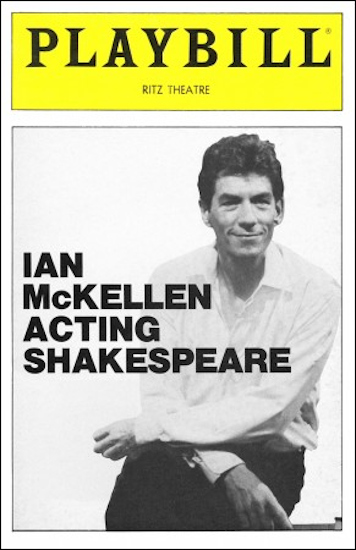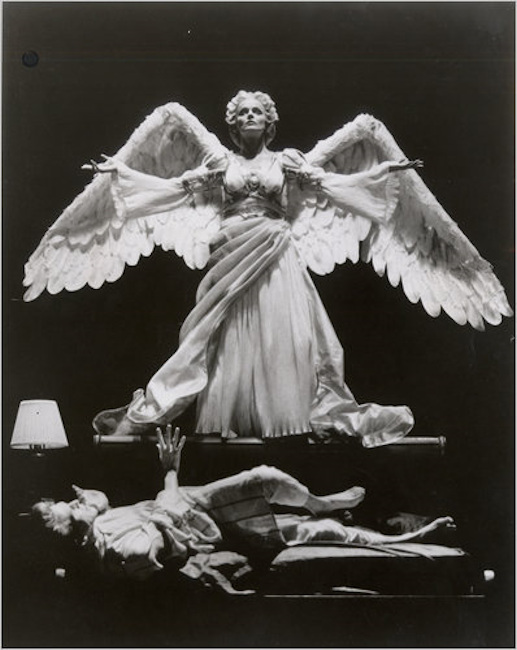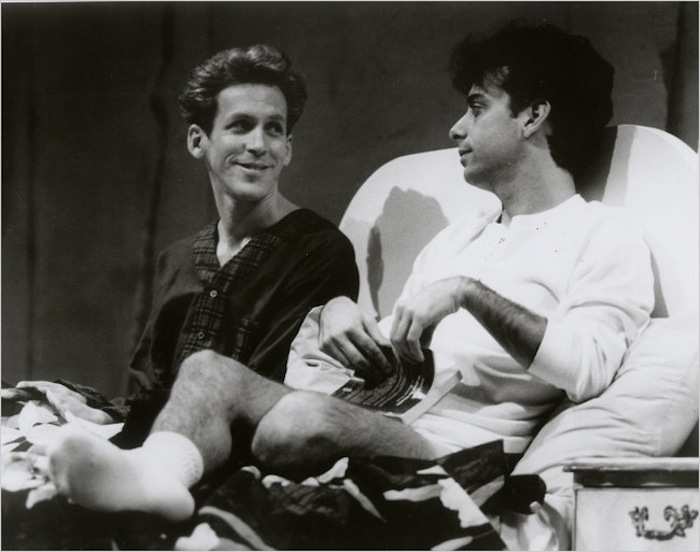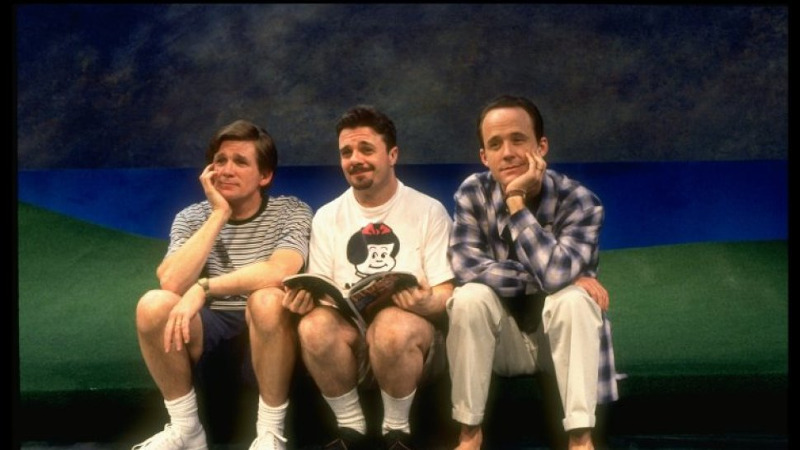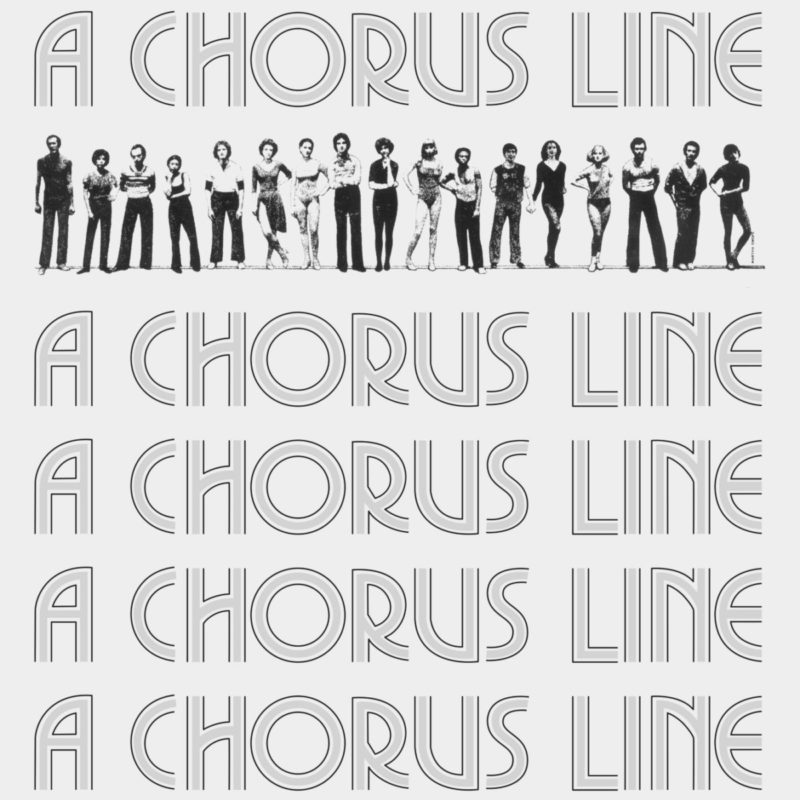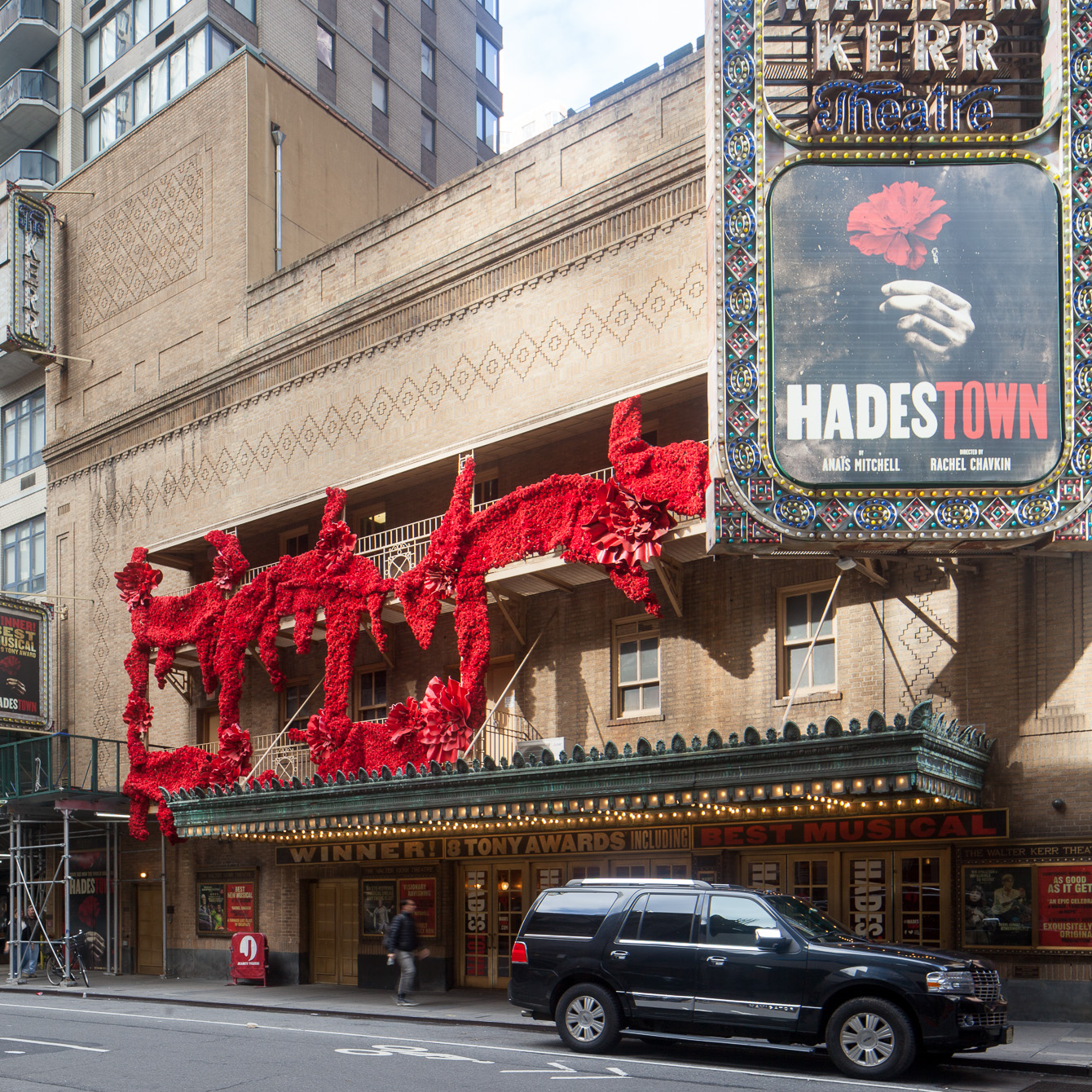
Walter Kerr Theater (originally Ritz Theater)
overview
Opened as the Ritz Theater in 1921 and renamed the Walter Kerr Theater in 1989, this venue has staged multiple productions involving major LGBT performers and creators, including, among others, Claudette Colbert, Alexander Woolcott, Ian McKellen, Tony Kushner, Nathan Lane, Noel Coward, and J.R. Ackerly, whose 1935 drama Prisoners of War featured a gay character.
The Tony Award- and Pulitzer Prize-winning Angels in America, by Tony Kushner, was a highly significant two-part, LGBT-themed play that ran at the Walter Kerr from 1993 to 1994.
History
Ritz Theater
One gay-themed play attempted to open at the Ritz Theater despite the Wales Padlock Law (1927), which forbade the depiction of “sex perversion” on stage. Prisoners of War (1935) was the American premiere of the drama, featuring a gay character, by openly gay English writer and editor J.R. Ackerly. After being rejected by New York reviewers, it played only eight performances. One other play at the Ritz co-written by a gay playwright was First Episode (1934) by Terence Rattigan and Philip Heimann.
LGBT-associated productions at the Ritz included:
- Banco (1922), with actor Alfred Lunt
- In Love with Love (1923), with actor Lynn Fontanne
- Outward Bound (1924), with actor Alfred Lunt
- Hassard Short’s Ritz Revue (1924), with actor Jay Brennan
- A Kiss in a Taxi (1925), with actor Claudette Colbert
- Bye, Bye, Bonnie (1927), with female impersonator Arthur C. Budd
- Sisters of the Chorus (1930), with actor Jean Malin
- Two Seconds (1931), with actor Blythe Daly
- The First Apple (1934, opened at the Booth Theater), with actor Spring Byington
- Petticoat Fever (1935), with actor Ona Munson
- Harlem Cavalcade (1942), with actor Jimmie Daniels
From 1943 to 1965, the Ritz Theater was used as a radio, and then a TV, station. It was the location of Broadway commentaries by critic Alexander Woollcott. The theater was renovated in 1971. Ian McKellen appeared here in Ian McKellen: Acting Shakespeare (1984), winner of the Outstanding One Person Show Drama Desk Award. Penn & Teller (1987-88) had scenic design by John Lee Beatty.
Walter Kerr Theater
The theater was renovated again in 1989 and renamed the Walter Kerr Theater. This was the venue for the highly significant two-part, LGBT-themed play Angels in America: Millennium Approaches and Angels in America: Perestroika (1993-94) by Tony Kushner. Millennium Approaches received the Pulitzer Prize for Drama; Tony Awards for Best Play, Best Featured Actor in a Play (Stephen Spinella), and Best Direction of a Play (George C. Wolfe); and Drama Desk Awards for Outstanding New Play, Outstanding Director of a Play, and Outstanding Featured Actor in a Play (Spinella and Joe Mantello). Perestroika received Tony Awards for Best Play and Best Featured Actor in a Play (Spinella), and Drama Desk Awards for Outstanding Play and Outstanding Actor in a Play (Spinella). Other performers in the play included David Marshall Grant and Kathleen Chalfant.
Other LGBT-associated productions at the Walter Kerr have included:
- I Hate Hamlet (1991) by Paul Rudnick, and with scenic design by Tony Straiges
- Love! Valour! Compassion! (1995) by Terrence McNally (Best Play Tony Award and Outstanding Play Drama Desk Award), directed by Joe Mantello, and with actors John Glover (Best Featured Actor in a Play Tony Award), Nathan Lane (Outstanding Featured Actor in a Play Drama Desk Award), and John Benjamin Hickey
- Present Laughter (revival, 1996-97) by Noel Coward, with scenic design by Ray Klausen, and with actor Jeff Weiss
- Waiting in the Wings (1999-2000) by Noel Coward, with scenic design by Ray Klausen
- A Moon for the Misbegotten (revival, 2000), with lighting design by Pat Collins, and with actor Cherry Jones
- Proof (2000-2003), a big hit, with scenic design by John Lee Beatty and lighting design by Pat Collins
Entry by Jay Shockley, project director (August 2019, with multiple additions).
NOTE: Names above in bold indicate LGBT people.
Building Information
- Architect or Builder: Herbert J. Krapp
- Year Built: 1921
Sources
“The 1st List of: Gay/Lesbian/Bi Industry People, Both in Front and Behind the Camera,” www.imdb.com, May 31, 2013.
Adam Hetrick, “The Work of Broadway’s Gay and Lesbian Artistic Community Goes on Display Nov. 14 When the Leslie/Lohman Gay Art Foundation Gallery Presents ‘StageStruck: The Magic of Theatre Design’,” Playbill, November 14, 2007.
Internet Broadway Database.
Kaier Curtin, “We Can Always Call Them Bulgarians”: the Emergence of Lesbians and Gay Men on the American Stage (Boston: Alyson Publications, 1987).
Do you have more information about this site?
This project is enriched by your participation! Do you have your own images of this site? Or a story to share? Would you like to suggest a different historic site?
